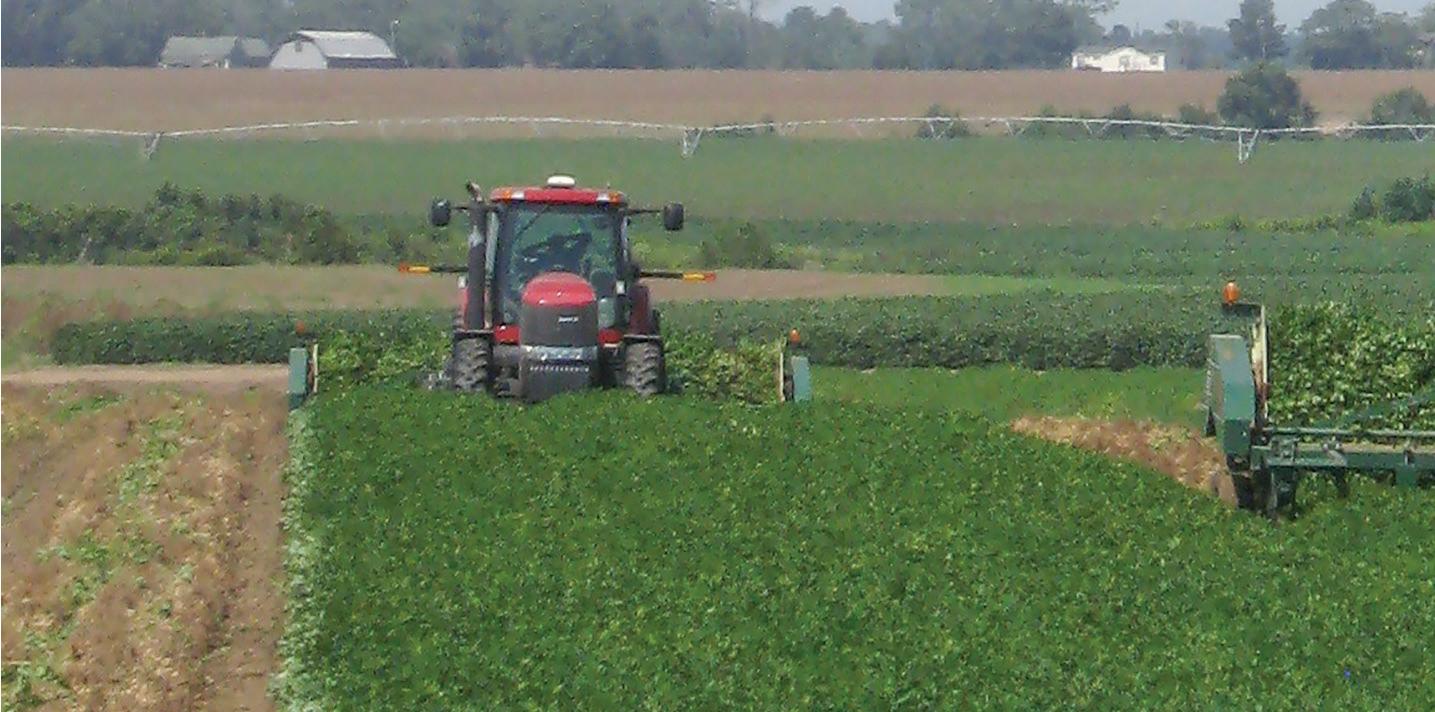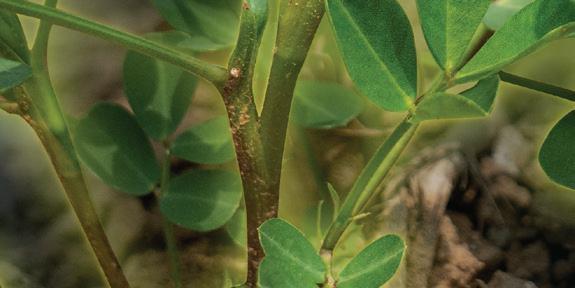
7 minute read
Digging Out
Acreage adjustments have helped reduce carryover, and the same is needed in 2020.
By Amanda Huber
The past three years have been tough, to say the least. A tremendously big crop in 2017 created a carryover that has been looming over producers’ heads. Although adjustments were made in planted acres in 2018 and 2019, those crops were affected by Hurricane Michael, flooding and a quality-degrading drought in 2019.
A Carryover Reduction
The National Peanut Lab’s Research Director Marshall Lamb says it has taken three years to work off overproduction from the 2017 crop.
“Producers made adjustments in acreage during the 2018 and 2019 crops that has moved the carryforward to a better position.”
Dell Cotton, executive director of the Peanut Growers Cooperative Marketing Association, Suffolk, Virginia, says 2015 through 2017 were some of the biggest production years, and that’s what created the hole the industry has been trying to dig out of since. “One reason for those big crops was the introduction of generic base in the 2014 Farm Bill, which resulted in the planting of peanuts over other crops because of the better price. When we got that changed in 2018 is when things started to settle down a bit.”

An Increase In Average Yield
In 2019, five states produced more than 4,000 pounds per acre: Georgia, North Carolina, Virginia, Arkansas and Oklahoma. The average yield, nationwide, was 3,933 pounds per acre, and Arkansas produced the highest yield at 5,204 pounds per acre.
“It’s amazing how well we have developed our varieties,” Cotton says. “Georgia hasn’t dipped below 4,000 pounds per acre since 2012.
“It’s one thing to do it in a state like Virginia with 12,000 acres; it’s another thing to do it in a state with 500,000 acres. It really starts with the varieties and ends with having a good harvest.
Market Highlights • Acreage adjustments have helped reduce carryover. • Total U.S. average yield is nearly 4,000 pounds per acre. • The 2019 crop had significant aflatoxin levels. • Price continues to be near $400 per ton. • What e ect trade agreements will have is still unknown. • Tonnage equal to 2019 would further reduce carryover.



SEE THE DIFFERENCE WHERE IT COUNTS.
















Keep resistant white mold out of your elds with Lucento® fungicide from FMC. It’s the only premix that combines two modes of action: utriafol, a systemic triazole for curative control, and bixafen, a next-generation SDHI for broad-spectrum, residual control you can trust to protect your peanut yields. Control the toughest diseases in your fi elds with an exclusive, novel premix.












In fact, Lucento fungicide surpassed industry-leading fungicides in both disease control and crop yields in recent trials. *



Lucento fungicide is one of 40+ products eligible for the exclusive Performance Assurances and Product Financing with the FMC Freedom Pass program.
Visit your FMC retailer or FMCAGUS.COM/LUCENTO to learn more.



* Research from development and university testing across many locations. For a list of such studies, please contact your FMC representative.


Quality Concerns
One difference in 2019 was drought and the significant increase in aflatoxin. University of Georgia Extension Agriculture Economist Adam Rabinowitz says yield was adjusted because of the effects of drought in dryland production. “Quality of the crop was a concern because aflatoxin was at its highest rate since 2016.”
Cotton says, “Nearly 2% of the whole crop was Seg. 3 due to drought. For Alabama, Georgia and South Carolina, it is the second consecutive year at least some portion of the state had drought.” He says the increase in aflatoxin is a problem when sending peanuts to the European Union, which has strict rules for quality.

Stable Trade Markets Needed
Exporting is critical to agriculture, peanuts included.
“We export about 25% of our production,” Cotton says. “In years when
Performance Gypsum

• CA-20% S-17% • Remediate Sodic Soils, Brine Damage & Tight Clays • Reliable Source of Sulfur • Economically Priced • Always Available • Knowledgeable Sales Rep • Use on preventative plant acres before harvest and receive a discount
Clint Ellis 731-693-9146 clint.ellis@boral.com
we had increased consumption and demand, it usually means we exported more than expected. Our best export years came when China bought a lot of our peanuts.”
In the newly signed Phase One deal, China has agreed to purchase an additional $40 million in agricultural goods each year.
“It may be optimistic where China is concerned, but the strengthening of competing crops, specifically cotton and soybeans, would have more to do with an upturn in peanut contract prices than anything that could happen in peanuts, directly,” he says. “We need for China to be a reliable market and a stable export destination for our peanuts. That would be the best outcome for the recent trade agreement.”
Contracting Options
Even with the reduction in carryover, there are still too many peanuts.
Looking ahead to 2020, Rabinowitz says, one needs to consider the continued excess supply and the stagnant demand during the past four years. “This means that a reduction in production is warranted, and that begins with a decrease in planted acres,” he says. “However, a reduction in planted acres is unlikely to occur, as alternative crops in Georgia do not present much better opportunities for higher net returns.
“A price near $400 per ton is expected. Farmers are advised to consider their individual risk tolerance and what makes sense for their business given their own financial situation. One strategy at current market prices might include contracting for some of the expected production and waiting for the market to develop throughout the year.”
Lamb agrees that the correct amount of planted acreage is critical in 2020. He looks for it to be influenced by cotton prices and plantings over the next two months.
“We can get to a good carryout position going into 2021 if we produce the same tonnage. However, we can easily overplant in 2020 and be in a period of oversupply again, which would affect us 2021 and beyond.” PG



